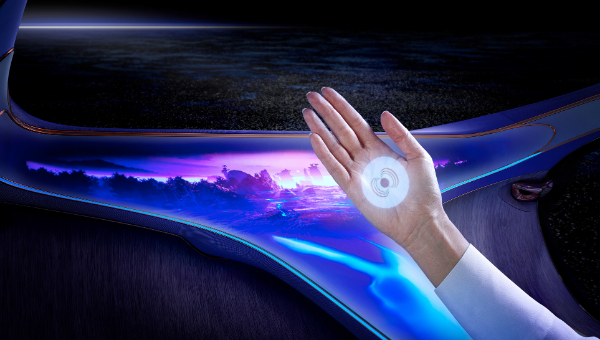
The team built a machine to carry the stamps and were able to create imprints at 200mm per second, which is comparable to industrial printing technologies. The results of commercially produced versions of this technology will be incorporated into structural electronic components for incorporation within automotive designs. However, that’s just one application of this sort of technology. These techniques are going to touch all areas of our lives, and probably do so in the very near future.
The word ‘innovation’ is overused to the point of becoming hackneyed. However, organisations like MIT and CSIRO earn their international kudos from genuine innovation. In a further contribution to structural electronics, MIT engineers have invented a 3D printing filament that has embedded circuitry. That’s right. The actual fibre extruded from a standard 3D printer will have electronics inside it. So whatever it’s used to make will automatically contain structural electronics.
Although standard 3D printers can be used, they do require a different head. This is because the filament is, as would be expected, of a different construction to a standard filament. The electronics is bundled in the central section and encased in a polymer cladding. The filament isn’t completely melted as it is in a normal printer. Instead, it passes through the lower temperature head much more quickly so that only the outer cladding is melted. So, as with normal filaments, this allows the filament to stick to itself while retaining the arrangement of the electronics in its internal structure.
The engineering team has been developing this technology for a couple of decades. The filaments have within them thermally drawn fibres that contain the electronics. The fibres have electronic components within them that can perform many different tasks. Clever enough, but there’s more. Initially, the fibres and components within them are created at larger scale. Then they’re heated and drawn in a furnace to create a very narrow fibre that retains all of the components in the same relative positions but at greatly reduced scale.
Internal components can consist of metal wires, semiconductors for control functions and polymer insulators. An example model airplane wing contained eight filaments with embedded light emitting and light detecting elements. It’s possible to fit even more filaments in a fibre. The team says that previously it hasn’t been possible to deposit a similar mix of components at one time because the technologies for doing so were separate. This represents a major developmental step in 3D printing.
CSIRO has been working on ultra-thin, flexible electronics. In particular, the organisation has been working on printable solar cells and OLEDs (Organic Light Emitting Diodes). Printable solar cells that are flexible enough to conform to irregular surfaces will be useful in allowing all sorts of things, like the exteriors of vehicle roofs, to become energy collectors. Also, because printed solar cells are transparent they can simultaneously provide a tinting effect while collecting energy.
Printable OLEDs in automotive interiors will provide a more direct and meaningful human-to-vehicle interface. As an example, imagine driving along in an enclosed vehicle fitted with an OLED roof lining. Selecting the convertible setting from a menu (that appears on a surface only when needed) would provide an overhead view of the outside world without the tousled hair. Of course, a strong breeze from the climate system could augment the effect.
Industrial giant, DuPont, is also a player in structural electronics technology. It offers In-Mold Electronic Technology solutions that feature circuits printed in special inks suited to industrial forming processes. The company suggests that parts formed in this way can be up to 70 percent lighter because buttons and wires are removed from switches.
Also, structural electronics like In-Mold Electronic Technology and others mean lower costs because production is simpler and more efficient. Further, part assembly time is reduced because parts can be designed to snap together. The formed circuit carrying sheets can be combined with injection molding to create embedded circuits in parts of widely varying design. The inks in the DuPont process are specifically designed to withstand the heat of injection molding.
Always at the forefront of vehicle technology, Mercedes-Benz is never far behind the latest technologies with an inspiring concept car. As far as structural electronics is concerned, the VISION AVTR concept would have to encapsulate the fusion made possible by the structural electronics approach. In fact, a car like this simply wouldn’t be possible without it.
The company describes the VISION AVTR as a possibility for the distant future, a fusion between human, machine and nature. While that might sound dismissively overblown to cynical ears, there is some merit to the composite claim. The design seeks to link human and machine by touch but in reality cars will be completely autonomous by the time such a vehicle enters production. The VISION AVTR was inspired by the movie Avatar but it’s important to remember that the movie was inspired by humans. Cars have always sought to combine human and machine. With green sentiment becoming more popular, perhaps there might be room for a third entity in the relationship. One thing is for sure – whatever the future brings in terms of interconnectedness, it’s going to take structural electronics to achieve it.
Read Shrink Fit (Part 1). Alternatively, view the full article and accompanying imagery in the April 2020 issue of Australian Automotive (page 44).